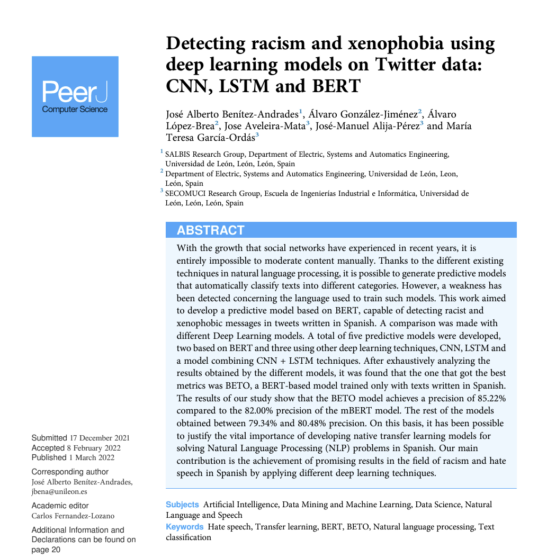Detecting racism and xenophobia using deep learning models on Twitter data: CNN, LSTM and BERT
Abstract
With the growth that social networks have experienced in recent years, it is entirely impossible to moderate content manually. Thanks to the different existing techniques in natural language processing, it is possible to generate predictive models that automatically classify texts into different categories. However, a weakness has been detected concerning the language used to train such models. This work aimed to develop a predictive model based on BERT, capable of detecting racist and xenophobic messages in tweets written in Spanish. A comparison was made with different Deep Learning models. A total of five predictive models were developed, two based on BERT and three using other deep learning techniques, CNN, LSTM and a model combining CNN + LSTM techniques. After exhaustively analyzing the results obtained by the different models, it was found that the one that got the best metrics was BETO, a BERT-based model trained only with texts written in Spanish. The results of our study show that the BETO model achieves a precision of 85.22% compared to the 82.00% precision of the mBERT model. The rest of the models obtained between 79.34% and 80.48% precision. On this basis, it has been possible to justify the vital importance of developing native transfer learning models for solving Natural Language Processing (NLP) problems in Spanish. Our main contribution is the achievement of promising results in the field of racism and hate speech in Spanish by applying different deep learning techniques.
Cite this as
2022. Detecting racism and xenophobia using deep learning models on Twitter data: CNN, LSTM and BERT. PeerJ Computer Science 8:e906 https://doi.org/10.7717/peerj-cs.906

